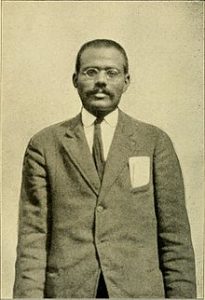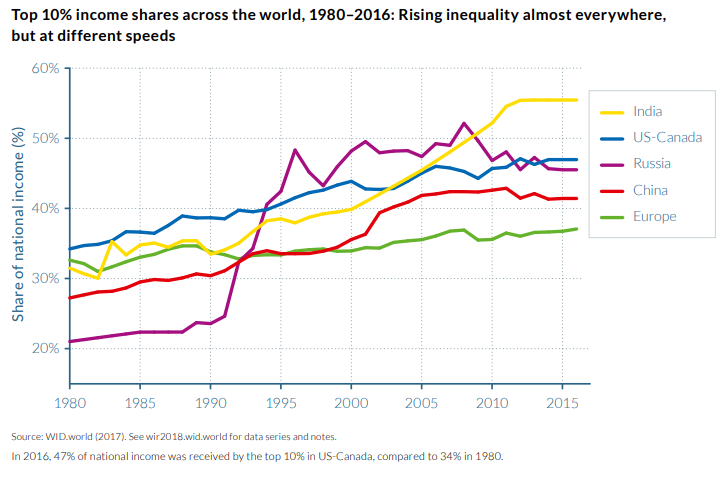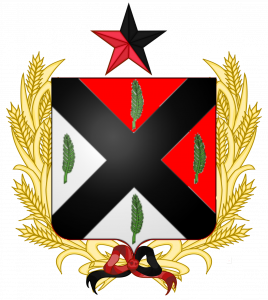
Caste is, as Ambedkar said, “not just a division of labour but, a division of labourers.” Wherever this institution went, it tried to freeze the society into a fossilized rulership and a fossilized disposable and disciplined labouring class. And just as division of labour alienates the workers from her work, product of her labour and life itself; the division of labourers alienated the whole of society and deeply fractured the spirit of human morality and solidarity. The caste structure gave birth to the caste society which has outlived the mode of domination it was invented to serve.
The straitjacket of caste did not emerge in isolation. It is one part of the centuries old project of societal control – Brahmanism. This entry is an attempt to find an anarchist orientation towards Bhrahmanism and its annihilation by looking at some episodes in its history and mutations.
Brahmanism, primarily, is and always has been a socio-political ideology and not a religious movement. The ideology consists in the believe that Brahmans have established links with the higher realms, they are the natural advisors to the rulers on social and political matters and, that they hold the highest place in the social hierarchy. The hierarchy consists in a four tier system of Varna and those who are out of this hierarchy forming the Avarna strata, based on Brahmans principles of standardized purity. Within this image of the Brahmanical society the caste becomes the essential of realizing the dominance of Brahmans as the priestly caste. To insure the success and reproduction of this institution every aspect of human life from the cradle to the grave are governed by strict laws codified in various books and laws of local kingdoms.
This vision of society was largely realized in significant parts of the sub-continent with varying degrees of success, modifications and compromises with other power system. This was not an easy task and beginning with the invasion of Alexander of Macedon, the Brahmans were prosecuted in the north-western region of what is now called India, the only region where they had influence. This continued with Ashoka’s and later his son, Kunala’s murdering of the “treacherous” Brahmans who were fueling anti-Maurya sentiments in local courts. The situation was so bad for the priestly caste that they were sure that the end of the world has finally arrived – the end of Kali Yuga. But Brahmanism not only survived but thrived and the impacts of its unfortunate success to this day are leaving bloody marks on human body and spirit.
Brahmanism conquered not by the blade of the sword but with the succor of the myth. Brahmans spread stories of their demigod like powers, the benefits of befriending and dangers of crossing them. Most importantly they provided to the rulers a divine lineage and right to rule till the end of time and the practical knowledge of statecraft. The Brahmans without ever becoming a threat to political power gave rulers a lineage they can link back to the Puranas and the Vedic era. They were not only able but necessary for the prosperity of the land, making the ruler the permanent and necessary fixture in the mind of the masses.
The benefits flow both ways. Kshatriya and the other ruling castes were essential for realizing the Brahmanical society. It was the duty of the warrior class to institute Danda for its maintenance. In essence, Brahmanism is statism. The kingly class is so essential to the ideology that the end of Yugas are marked by the Kshatriyas becoming incompetent in maintaining the Varna vyavastha and that the evidence that the end of time had not yet arrived was the fact that most king’s lineage maintained their thrones.
This perfect union of the priestly caste and the ruling class is no accident. Humans, when incapable of making sense of the untimely flood, failed crops or plague conjure up unseen forces that help us make sense of the unpredictability and meaninglessness around. Through the combined effect of general ignorance and the need for self-preservation the first seed of authority and power is sown in the heart. God becomes the Supreme Ruler. Once formalized enough, we try to tame the forces through rituals and sacrifices. In initial stages this practice is individualistic. The relation of these forces or gods is direct and intimate, but soon these practices become socialized and a specialized class of sacrifice experts emerges. The link of individual to the god is broken and a flesh and blood human becomes a new center of social power. The same phenomenon repeats itself in sphere of social organization and to tame the social forces in our favor we learn to surrender to the Ruler, sent on earth by the Supreme Ruler. To the extent we submit to a power for self preservation, from corporate bureaucracies to nation states and families, all forms of rulershipare religion.
It was during this period of renewal of Brahmanism, returning from the brink of extinction that the pantheon that is now recognized as Hindu deities was gradually created. First by casting the individualistic, semi-socialized religious cults of Krishna, Shiva etc into the mold of Brahmanism and later by making the newer gods the incarnation of the former. In this process of absorptionreplicating the hierarchy of the Brahmanical society into the realm of gods. Through economic and political coercion the religious power now served the interest of the Brahmans and states.
I skip the changes this Brahmanical temporal authority ordained by the divine authority underwent over the next few centuries and under the Mughal rule and turn to its first interaction with capitalism, the Company Raj, colonization and modern nation states that shook the roots of the old project. In the preceding decades the merchant caste, with its control over rural finance and land displaced the Brahmans from the top of social hierarchy. In Bengal province by the end of the nawab rule fifteen families controlled 60% of the land and in Punjab the British administration had to introduce a law to regulate the acquisition of land by the money lenders on failure of payment of debts. And with the changing nature of sovereignty from the village level to the new national imagination Brahmanism had to mutate once more to survive.
The core of this mutation was the deep-seated hatred of the individual – her free development and initiative. Faced with European capitalism, in its vulgarized disguise of individual freedom the reformers, who had taken up the task of reviving the Indian culture by going back to the Vedic sources, were united in there contempt for the individual. They found in the Varna system the solution to the modern problems of nations. Caste does not necessarily have to be based on heredity but the proper division of labour and social activity based on natural hierarchies which was necessitated by the needs of social organization. Caste with natural leadership of Brahmans, was no longer justified by the metaphysics of religion became the outcome of the theology of social sciences, its theory of race, competition, gender superiority and survival of the fittest. Its aim was to serve the New God of “national interest”.
In search of this nation Brahmanism morphed into Hindutva. This new outward expression of the lust for power also explicitly presented itself as a political project and not a religious movement. Within the Hindi, Hindu, Hindustan that is to bring glory to the nation state, the Hindu is a casteist structure. This was novel. The Hindu identity for a political project was necessitated by two factors. First, the apparent feebleness of the social unity – togetherness and second, the essential principle of nationhood – unity through separation.
Savarkar understood this principle well – “nothing can weld peoples into a nation and nations into a state as the pressure of a common foe. Hatred separates as well as unites.” A nation is that artificial and arbitrary unit of territory and subjects that a political power has acquired for controlling and fleecing. It destroys the natural love and association with the place of birth and our immediate communities through its industrialization and directs that human feeling towards the worship of this abstraction, its symbols and submission to its policies. This form of rulership finds its fullest expression in Totalitarianism of Nazism, Bolshevism or Brahmanism.
The national identity of Hindu provided the aspect of togetherness through idea of blood, culture and language, modification of Shudhi, etc. and its separation through the idea of the Muslim. Whether the state takes refuge in the ideology and shape of Hindutva or secular nationalism – two face of the same coin, its true nature remains the same, that of attuning all human expressions to the beat of this soulless political machine in the name of “national interest”. This technical term does not include the interests of the population – free and quality education and health care, well paid jobs or free or cheap housing for all, it means the interest of the market, the interest of the war machine that is the life blood of the state – its defense from other competing states, its source of expansion outside and control within.
After the transfer of power in 1947, India has remained a fractured community with its apartheid of caste and material conditions furnished by generations of deprivation and violence. In the rural regions it maintain the old structure of control and coercion while in urban setting it modified mildly and justified the stratification by logic of hygiene and merit – that is justifying privilege with privilege itself. The new Indian state did not start a project of actively constructing a casteist state but through its passivity towards caste issues it perpetuated the caste society within the shell of a capitalist state system, each feeding off the other. The maintenance of hierarchical corporate structure that is the Hindu family and segregation through the institution of marriage. The upper castes continued their take over of bureaucracy and managerial positions in state and cultural institution, practically, without any reservation mechanism and that continue to define the Indian society till date.
If we anarchists say that sanctity of the temple of the parliament and its new priesthood just like the temple of the old gods and the Brahmans is a lie and deception then, what do we have to say about reservation and other methods of achieving equality within the current state of things? To this we say that even the ritual of horse sacrifice must have yielded results for the masses, not from the blood drawn but from their organizing for themselves, taking things into their own hand and shaking things up. This assertive self-organization of the masses in each epoch of history has realized to the extent possible the moral and social progress. And within the modern nation states this progress, which is the collective wealth of our humanity has received a degree of formalization.
The erosion of this progress and regression will always be a possibility as long as there is a power whose control it weakens. And when this social progress is at its highest the instruments of domination have also become sharper, deadly and now threaten us with the possibility of ending the only known experiment of life in the universe. Anarchist believe that through continuing this assertive self-organizing for securing more and more moral progress we not only improve our immediate condition but also prepare ourself for the final destruction of social, political and economic rulership. A liberal welfare state can be an holding ground that reduces the impact of the blows from the state and the caste society and gives us opportunity for further progress. But the ultimate safeguard from Brahmanism or any other form of absolute domination over human body and spirit is Anarchism.
In an hierarchical society, certain individuals at particular historical junctures can play a catalytic role in either accelerating the progress or dragging it back for decades. If the former, then too, it is the social organization of individuals based on values of equality, mutual aid and decentralization of power that maintain it. There is further limit of the strategy of “having the right faces in the high places”. Once in position of power, the prerogative of the institutions dictate their actions. Having women, dalit-bahujan or queer people In position of power, like other holding strategies can make some limited gains but in the end the only interests these individuals represent are their own. No person can “represent” another person, a whole community lesser still. It maintains the relations of dependence and submission and further dulls the instincts for self-initiative and fosters moral passivity – a perfect condition for Brahmanism or any form of authority to exploit.
Even if the major decision of life and society are now made by the captains of industry and states-persons, and even if these decisions are not primarily driven by Brahmanical interests (and how different are these differences after all?) Caste is still alive. Some aspects of caste have been weakened and at the same time others strengthened. The general economic inequality, access to housing, well paid jobs – which means class – is graded on caste lines. As one historian noted, “it is striking how many of the country’s billionaires today are, though not direct descendants of eighteenth- and early nineteenth-century magnates, certainly originate from the same communities which began to accumulate wealth and influence at the end of the Mughal period and during the rise of the English East India Company.” The social stigma, practices of untouchablity and the Brahmanical institution of marriage flourish. Two great forces are gravitating towards forging a new Brahmanical-Hindutva order and a hazy road for taking in the opposite direction also gradually becoming visible. Both possibilities, like always depend on one thing – Organizing.
The force of social reaction to the neo-liberal bloodbath which turned a preventable health crisis into an global pandemic and in India made 12 crore people unemployed in a single month is the decisive factor in the fate of Brahmanism. 10 crore young Indians have given up all hope of finding a job and had stopped searching for work long before the current economic breakdown. Half of the youth of this country are unemployed. And those who have work are working 12 hours shifts to survive hand to mouth. In this constantly changing external world the individual loses her equilibrium. These uprooted millions turn into a mob seeking a source of stability and finding themselves incapable of self emancipation look for external power that would uplift them and give life a new meaning. Along with religiosity, in some cases the caste relations are strengthened as they are seen as a source of nourishment.
This combined with RSS’s mobilization and organization is the path towards strengthening Leader worship and Hindutva. The breaking up of the process of class reproduction and the erosion of the middle class, and with it the hopes and aspirations of millions in front of their eyes is accelerating. By some estimate at least half of the children born in middle class do not remain in it when they reach adulthood. The concentrating boss class is eager to exploit the people on caste lines. This is where one possibility of going in the other direction lies – poor peoples’ revolutionary unionism. The traditional unions that replicate the caste structure due to its hierarchical nature will only represent the interests of the minority leader class and not the workers themselves.
Its only through Anarcho-Syndicalism that we can achieve the threefold task of achieving progress in living and work standards, wages, expansion of reservation to compensate for the generational subjugation of dalit-bahujans in private and public sector, expanding the public sector that enables creation of new and greener jobs, progressive taxation and day-to-day struggles at workplaces; confronting the caste issue face to face as members of working class as well as part of oppressed communities through minority committees, along with local union branches to address caste at workplace and within the unions and; shedding away the elaborate etiquette of submission of this casteist society through rediscovering our instincts for self-initiative and direct action rather being dependent on this or that leader, the despot of tomorrow. This rediscovery and the development of this instinct and culture in the organized form within these alternative institutions form the essential ingredient of the society that shall replace the current disorder.
John R. McLane noted that, “since an individual’s obligations and privileges were specific to his or her family, jati, and age, universal standards of political-moral behavior rarely galvanized people into cooperative political effort.” Any intellectual current or form of practice that exclusively promote inward inquiry at cost of building broad solidarity of all oppressed while understanding the various inner relations in practice, unintentionally replicates the essential of the nation and Brahmanical order and play into hand of our enemies like in 2019 general election where Jadav-Yadav dynamic was a major determining factor in BJP’s victory. We do not wish to repeat these past mistakes, neither of the Marxist left that minimizes the importance of non-economic cultural and social factors at work and in society and address them within their organization and programs nor, of the narrow identity politics that in the long-run poses no threat to the status quo that it apparently wishes to destroy and has no space for broad solidarity based on shared needs and values in genuinely democratic and workers controlled organizations.
Revolutionary unionism is only one part of the struggle. Anarchists and other individuals must engage in cultural struggles towards elimination of the caste society. I cannot pretend to have a solution to this problem, I can only note that we know that the forces of alienation aggravates it and that we have a legacy of experiments by the people from dalit-bahujan castes to build upon and with anarchist emphasis on the abolition of marriage, dismantling the corporation of family and building a society based on free love and societal responsibility of child rearing, we have the impetus to motivate action in direction of liberation.
Caste being a particular configuration of hierarchy and the method of its reproduction, it finds affinity with all forms of dominations and latch on to the one it finds. While through the autonomous and varied cultural struggles and fighting back the class war as working class dealing with caste antagonism we make conditions better for both our class and dalit-bahujans, Anarchism is Brahmanisms only permanent solution. As long as there is a state or a economy based on private property, RSS has the possibility of achieving its desired position of the Raj Guru to the State. Following in the footsteps of the Saudra-attishudra Dakaits and their direct actions against capital and domination we organize not to end any particular form of authority but Rulership itself.
For a Casteless Society! – For Annihilation of Brahmanism! – For a Free Humanity!
For Anarchy!




